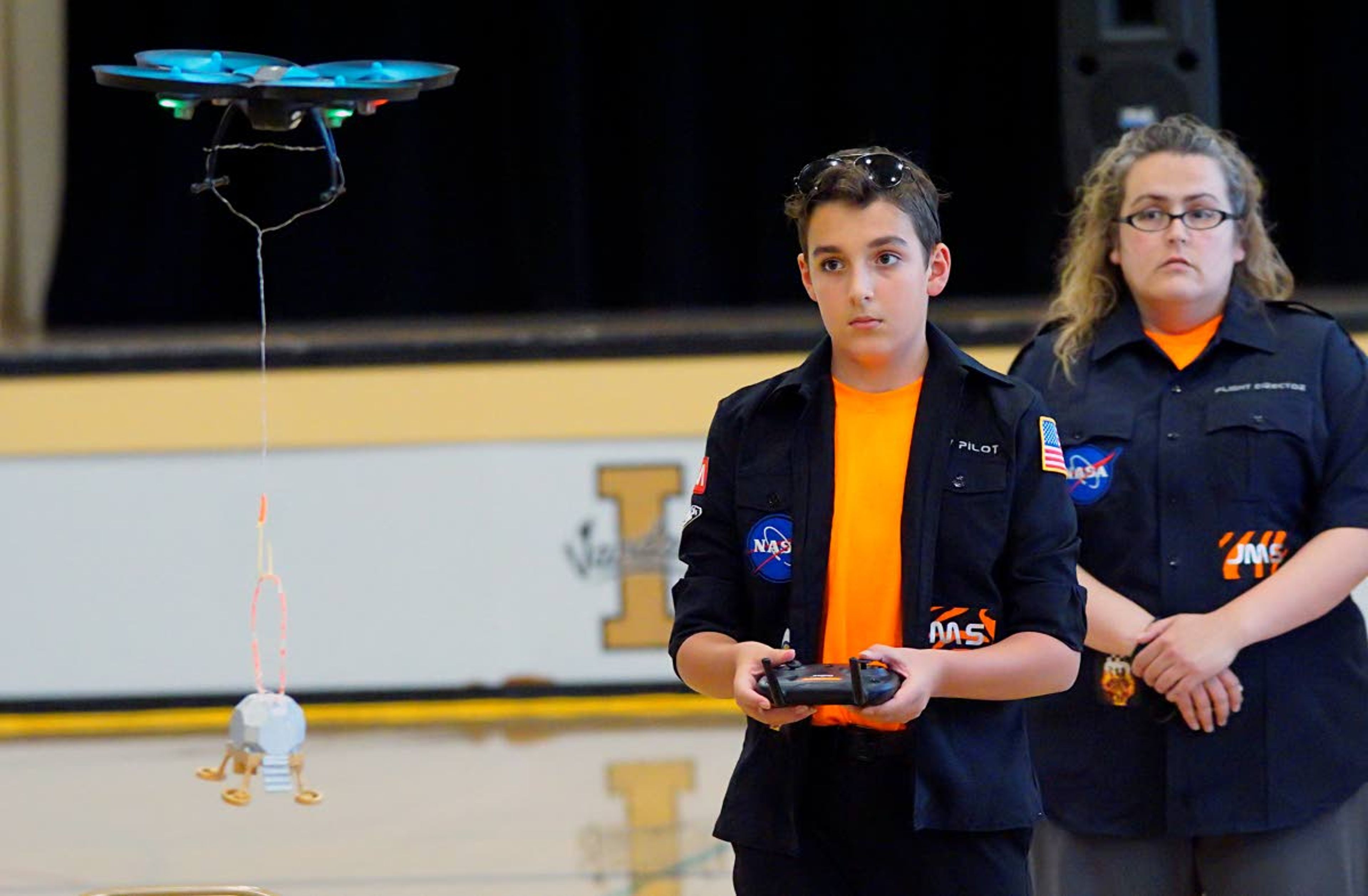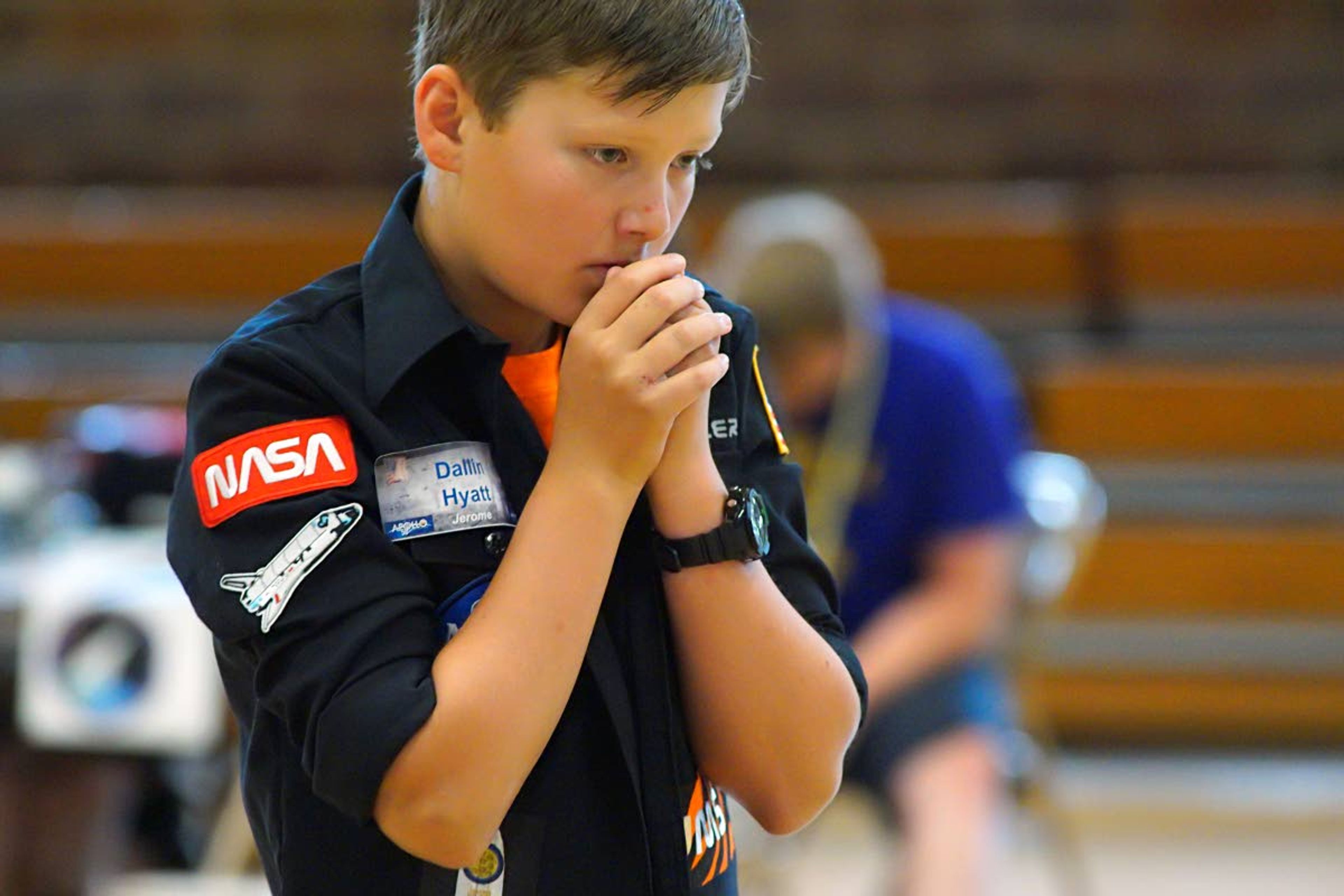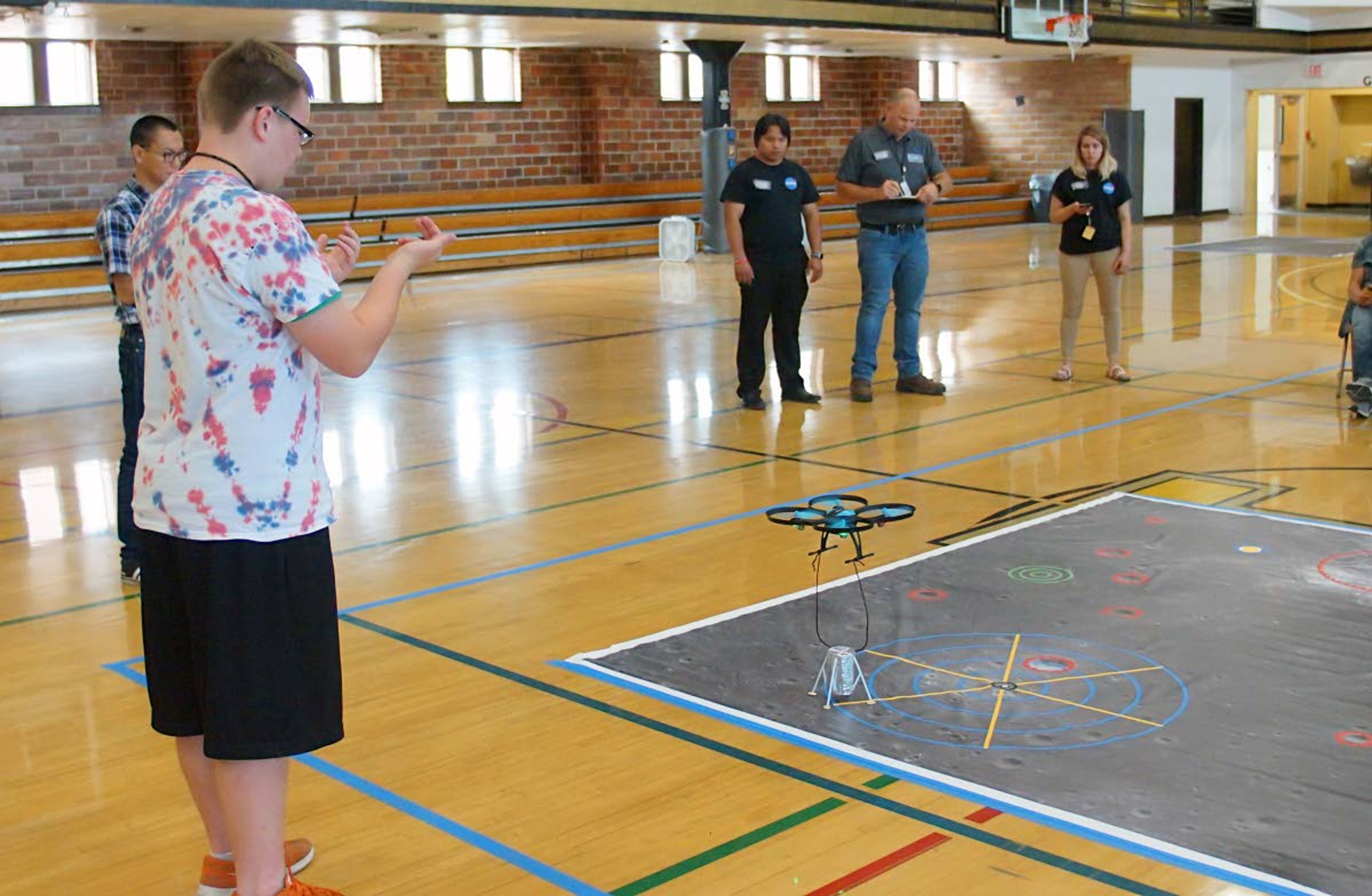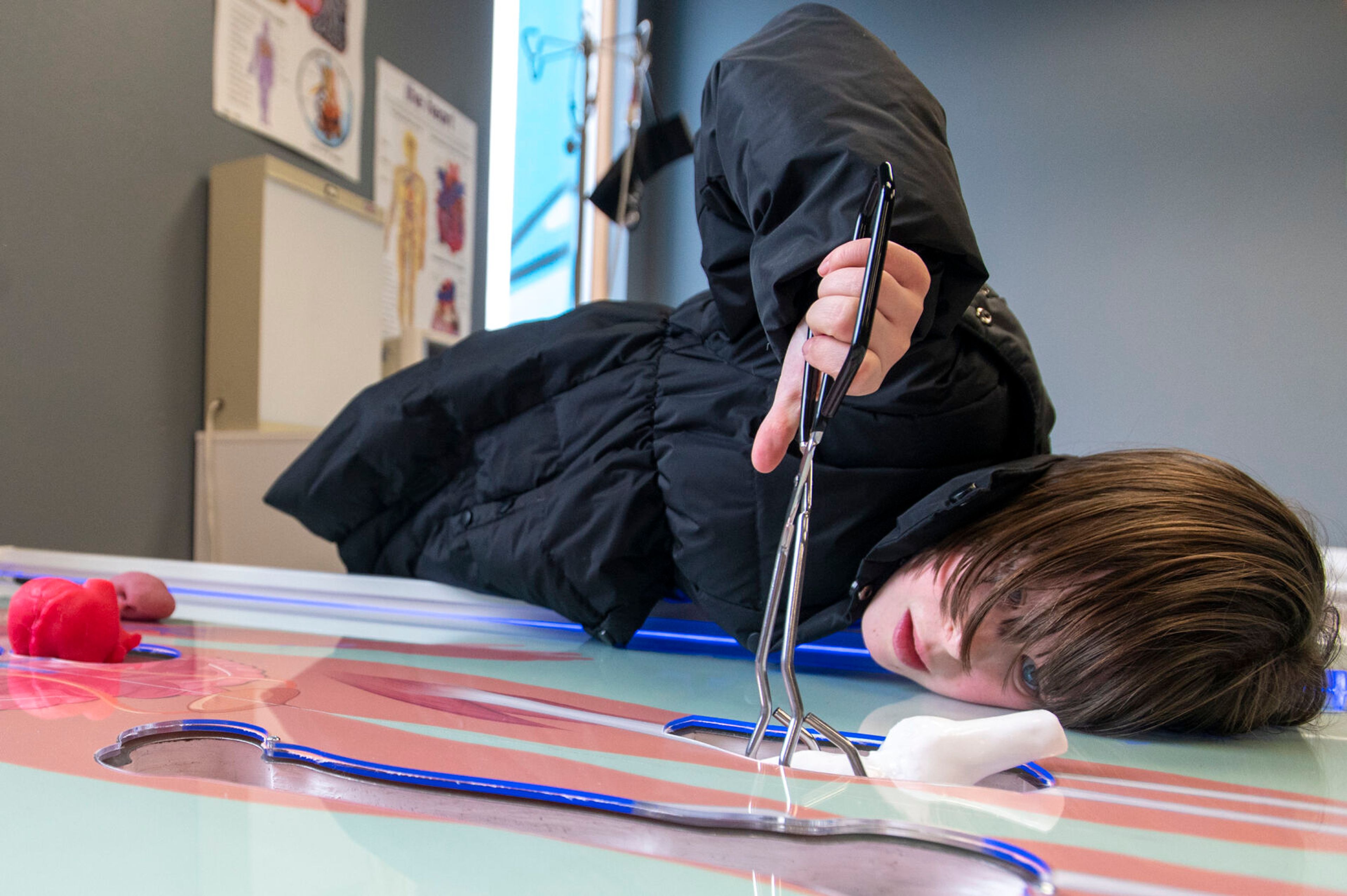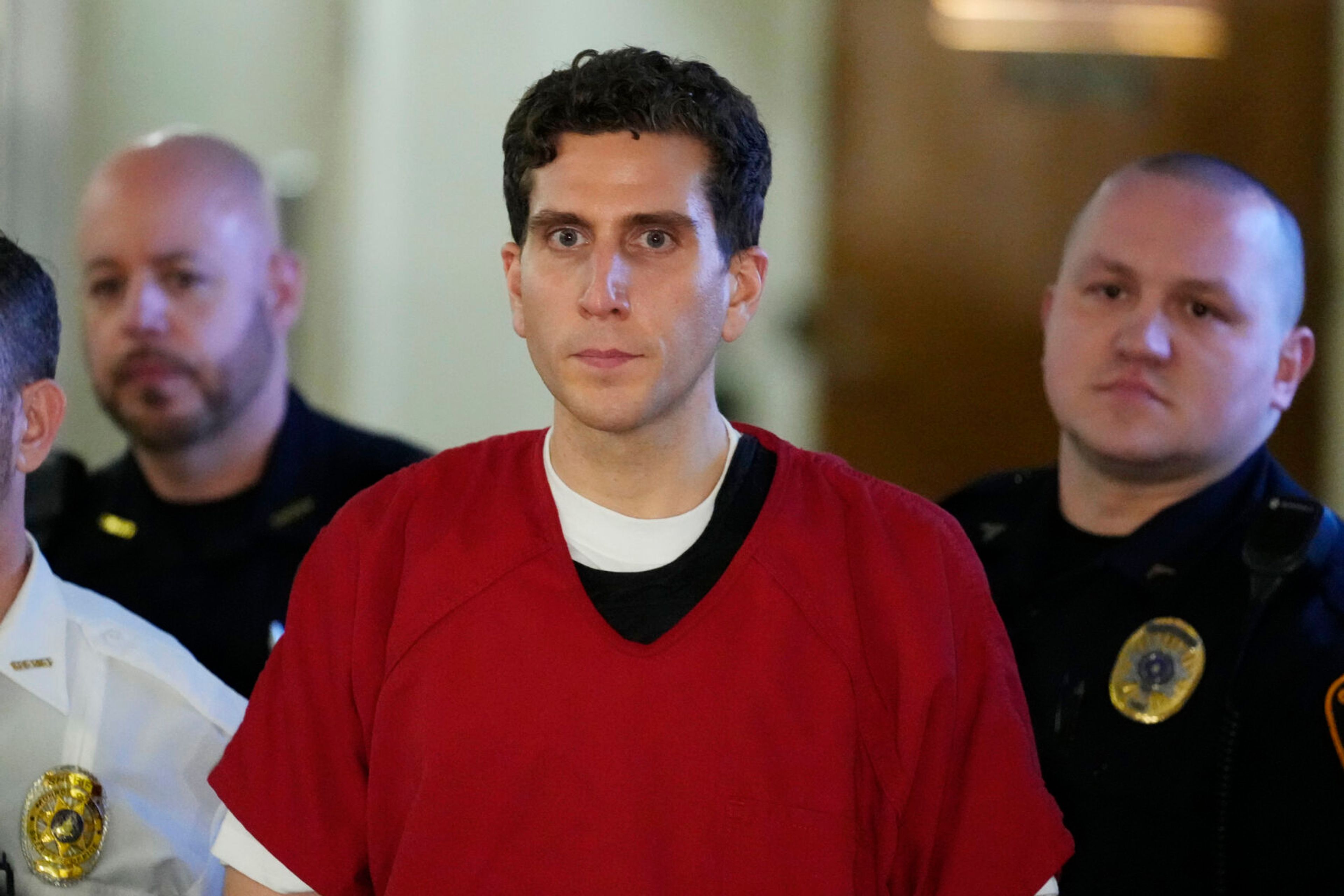‘Houston, we have a winner’
Jerome students rise above competition, where teams simulate Apollo 11 mission
Students from six Idaho schools traveled to the University of Idaho campus Tuesday to try their hand at a simulated moon mission for the chance to win an all-expense paid trip to NASA’s Johnson Space Center in Houston.
On its face, the competition focused on strengthening skills related to science, technology, engineering and math, or STEM. Organizers said Idaho is one of 13 participating states in the NASA-sponsored challenge, which they said aims to encourage interest — and possibly careers — in STEM-related fields.
UI’s STEM access outreach coordinator, John Ariola, who directed the event, said invitations and instructions were sent to schools throughout Idaho in March, and teams have been preparing ever since.
“They’re pretty much simulating an Apollo 11 mission,” Ariola said. “They drop their little module on the ‘moon’ and then the mission consists of them traveling from point A to point B to drop a payload.”
The challenge itself — dubbed the Apollo Next Giant Leap Student Challenge, or ANGLeS — consisted of a complex series of steps. Each team of five designed a lunar module that they were required to land within a target on a floor map of the moon’s surface with the help of a quadcopter drone.
Once the drone successfully unhooked from the module, the teams deployed a rover that was also designed and constructed by the students using Lego’s Mindstorm line of home-assembled, programmable robots. While one team member piloted the rover, inputting commands on a laptop, another called out directions to help navigate the craft between hazards. After completing their objectives on the “moon’s” surface, they used their drone to retrieve the lander.
Teams were judged not only on how smoothly they executed the “mission” but also received marks for the structural integrity and creativity of their rover and module, and for their team attire.
The competition winner — now with a trip to Texas in its future — was Jerome Middle School from southern Idaho, which executed the mission tasks with precision, and their navy blue, customized team jackets also set them apart from the crowd.
Each jacket bore authentic NASA patches and the individual team member’s nickname on the back. Jerome seventh-grader Kyleigh Gratzer said the team’s look, complete with black slacks and matching T-shirts, was meant to emulate the attire of real astronauts.
Gratzer, 13, said providing instruction in robotics and programming at a young age is becoming increasingly critical as more and more jobs become automated.
“I know (robots) are going to be part of our future,” she said. “We came from working with mostly our hands to having robots helping us and I feel like that’s going to be big in the future.”
Lewiston High School teacher Terri Varnado, in attendance with a small contingent of LHS engineering students said access to STEM programs gives students a low-stakes, inexpensive introduction to a set of skills that could one day become a career. She said events like the simulated moon mission serve to buoy that interest.
“They get to put their hands on cutting-edge technology and replicate real world missions that happened,” Varnado said. “For them to be able to do some replication of what they actually did with Apollo 11, 50 years ago, and being able to fly the drones to drop off the payload — it’s such a relevant real-world experience.”
Scott Jackson can be reached at (208) 883-4636 or by email to sjackson@dnews.com.
